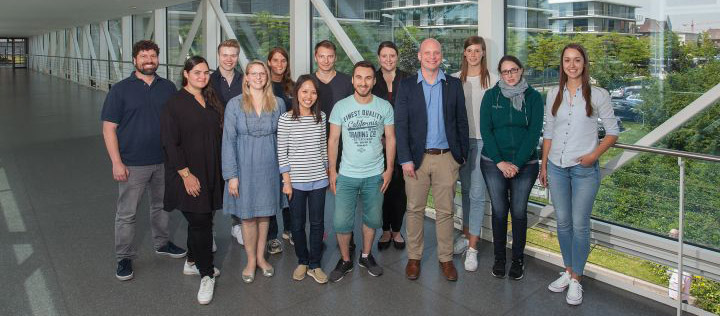Brain tumors are the most common cause of mortality in childhood cancer patients, and treatment options are limited, especially for recurrent cases. Researchers at the University Hospital Düsseldorf are using automation to develop a more personalized approach to cancer medicine, performing rapid drug screening to identify novel therapeutic strategies to improve the chances of survival.
Understanding of the underlying biology and causes of tumor development is critical to advancing treatments and improving mortality rates. Researchers at the University Hospital Düsseldorf are taking a holistic approach to this difficult area of oncology, combining genetic and epigenetic research with proteomics and drug screening. Daniel Picard, Senior Scientist in the Pediatric Neuro- Oncogenomics department, explained: “Our main goal is to characterize tumor-specific alterations affecting the coding and non-coding genome to refine existing or develop novel treatment strategies. Our research focus is the epigenetics of pediatric brain tumors – DNA methylation, microRNAs, and long non-coding RNA – and we combine this work with other approaches to personalize therapies.”
“We have a number of drug libraries that we use to screen brain tumor cultures, looking for tailored therapies that could be effective against individual tumors. The library that we are most interested in – which was developed by one of our team members – is comprised of 200 of the most promising compounds that are currently being used clinically or are in phase III clinical trials, and we need about two million cells for this screen. We now have a second, more extensive library that contains around 650 clinically-established compounds, which provides a more comprehensive drug response profile. We then use bioinformatics tools to determine distinct drug classes or molecular targets of interest. We try to manipulate the biopsy-derived cultures as little as possible, to make sure they are similar to the original tumor. Once we have harvested enough cells, we plate out and screen the tumor cells, using an in-house algorithm to determine IC50 values. This data allows us to identify which drugs are most effective against that individual tumor model. After screening, we also perform high resolution DNA methylation analysis on both the tumor biopsy and the cultured cells, to identify any methylation differences between the two. They are usually very similar, and that gives us confidence that our screening results are faithfully capturing the expected drug responses in patients.”

The Pediatric Neuro-Oncogenomics department at the University Hospital Düsseldorf
“When our lab was first set up in 2015, we were going to perform the whole workflow manually in a 96-well plate, but it was clear that automation would reduce our material consumption and increase productivity. We invested in a D300e Digital Dispenser, allowing us to dispense nine dilutions of each of the drugs from our libraries into plates prior to drug screening. We print between 60 and 80 copies of our libraries per run – helping to minimize the potential for batch effects and allowing us to investigate several tumor models at the same time. It’s also very cost effective, as we use a fraction of the materials that we would consume if we were conducting everything manually. Originally, we were using 384-well plates but, more recently, we have begun using 1,536-well plates instead, which has turned out to be incredibly useful. We performed several comparison studies to make sure swapping formats didn’t affect our results, and the correlation scores were very high, proving just how reliable and consistent the platform is – it’s amazing.”
“We then use a Spark® multimode microplate reader to monitor the effects of the library compounds using a CellTiter-Glo® Luminescent Cell Viability Assay (Promega). We have a Spark-Stack™ plate stacker which automates our plate loading, so we can just set everything up and walk away – it’s so convenient. It’s also much more consistent and reliable than our previous equipment – improving the reliability of our data – and it’s straightforward to set up and use. We have an amazing team working on the drug pipeline, most of them medical students coming through the lab. Although the majority of them have never touched a pipette before, they are able to use the equipment after a short tutorial. David Pauck, one of our medical students, even developed the algorithm we use to generate our IC50 values, which takes the raw data straight from the reader. This has been invaluable, and emphasizes how user friendly the platform is. It’s a real team effort.”
"The correlation scores were very high, proving just how reliable and consistent the platform is – it’s amazing.
“The automation solutions from Tecan are amazing; they are extremely consistent and help us to generate results that we have confidence in, while reducing our material consumption and saving us countless time. This allows us to focus on our goal of translating our research into a clinical application,” concluded Daniel.
To find out more about Tecan’s D300e Digital Dispenser, visit www.tecan.com/D300e
To find out more about Tecan’s Spark multimode reader, visit www.tecan.com/spark









